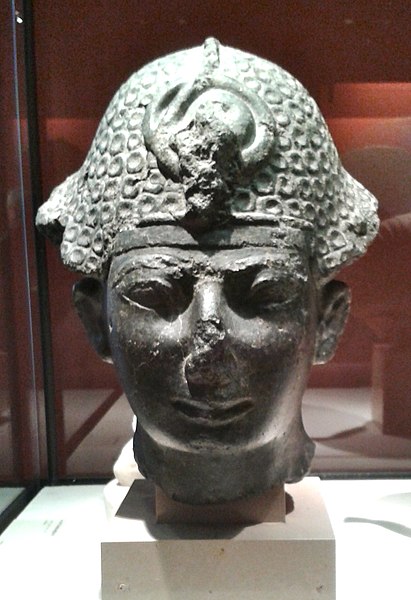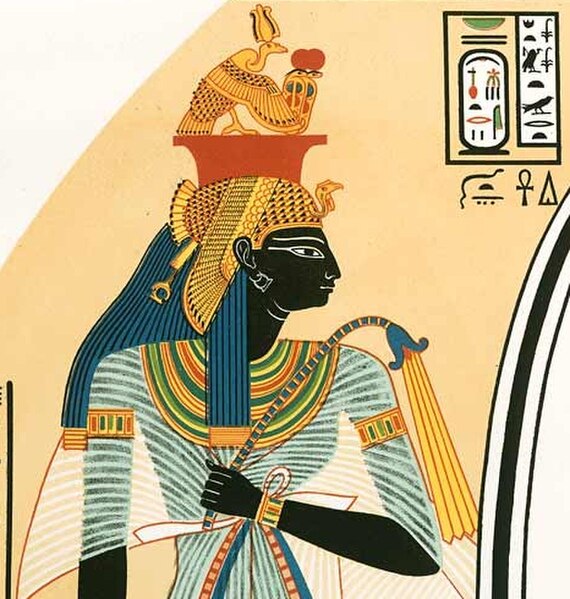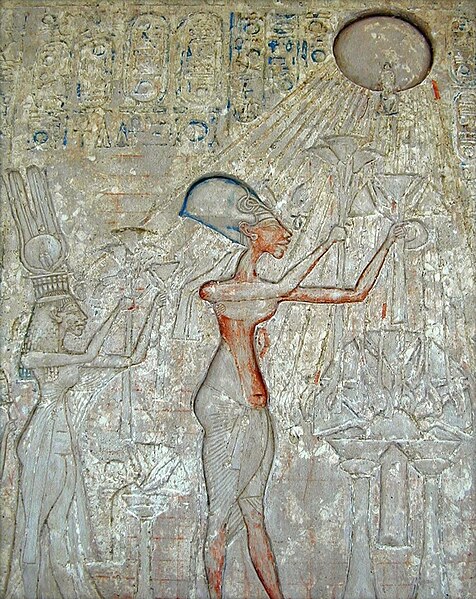Thutmose IV was the 8th Pharaoh of the 18th Dynasty of Egypt, who ruled in approximately the 14th century BC. His prenomen or royal name, Menkheperure, means "Established in forms is Re." He was the son of Amenhotep II and Tiaa.
Head of Thutmose IV wearing the blue crown. 18th Dynasty. State Museum of Egyptian Art, Munich.
Syrian ("Retjenu") tribute bearers in the tomb of Sobekhotep, during the reign of Thutmose IV, Thebes. British Museum
Thutmose IV wearing the khepresh, Musée du Louvre.
Fragment of a crudely carved limestone stela showing king Thutmose IV adoring a goddess (probably Astarte). From Thebes, Egypt. 18th Dynasty. The Petrie Museum of Egyptian Archaeology, London
Eighteenth Dynasty of Egypt
The Eighteenth Dynasty of Egypt is classified as the first dynasty of the New Kingdom of Egypt, the era in which ancient Egypt achieved the peak of its power. The Eighteenth Dynasty spanned the period from 1550/1549 to 1292 BC. This dynasty is also known as the Thutmoside Dynasty) for the four pharaohs named Thutmose.
Ahmose-Nefertari. Ahmose-Nefertari was the daughter of Seqenenre Tao, a 17th dynasty king who rose up against the Hyksos. Her brother Ahmose, expelled the Hyksos, and she became queen of a united Egypt. She was deified after she died.
Head of an Early Eighteenth Dynasty King, depicting either Ahmose I, Amenhotep I or Thutmose I, c. 1539–1493 BC, 37.38E, Brooklyn Museum
Akhenaten and his family adoring the Aten. Second from the left is Meritaten, daughter of Akhenaten.
Block Statue of the Second Prophet of Amun Ay, c. 1336–1327 BC, 66.174.1, Brooklyn Museum








